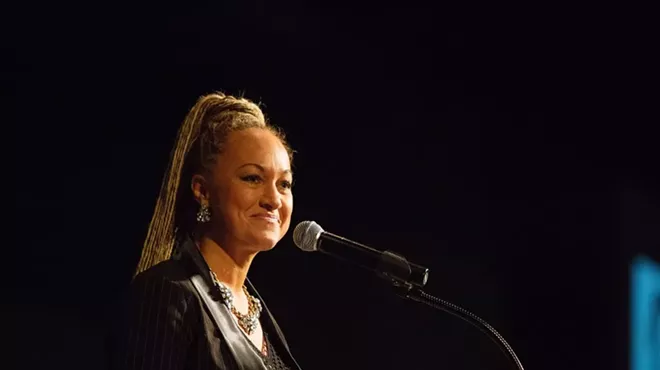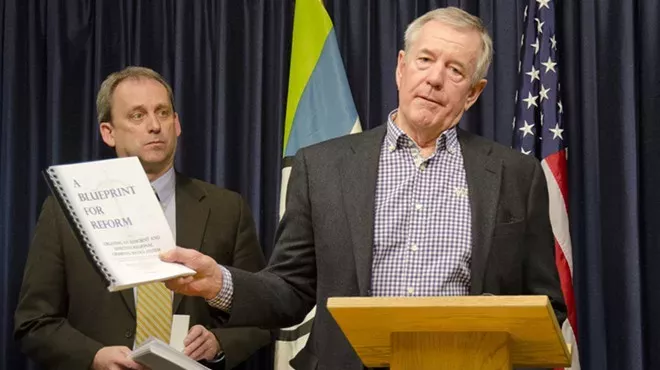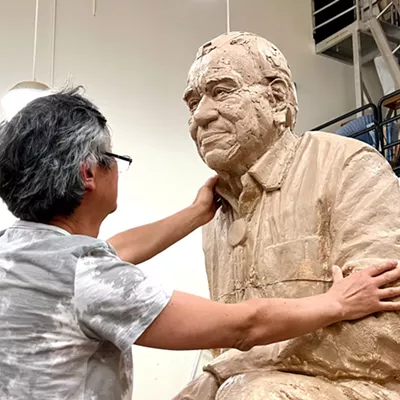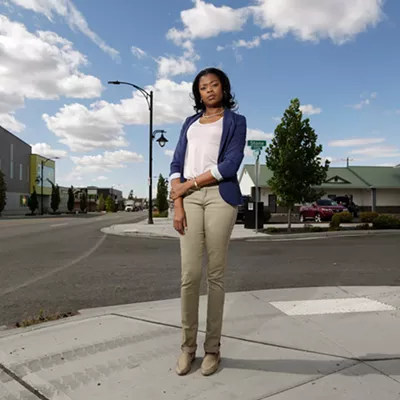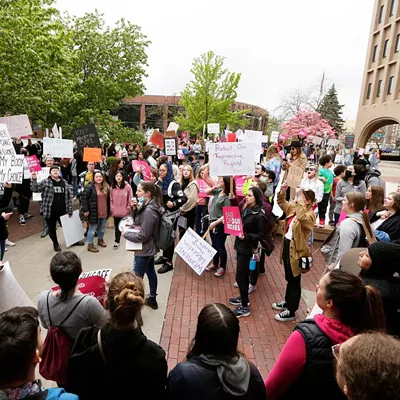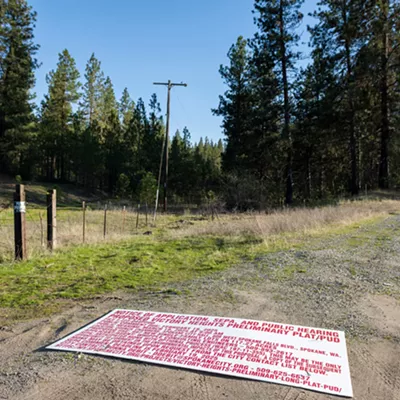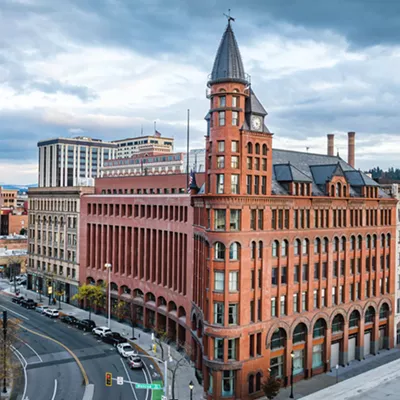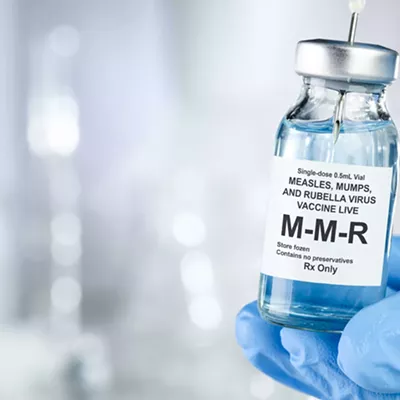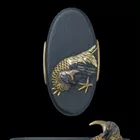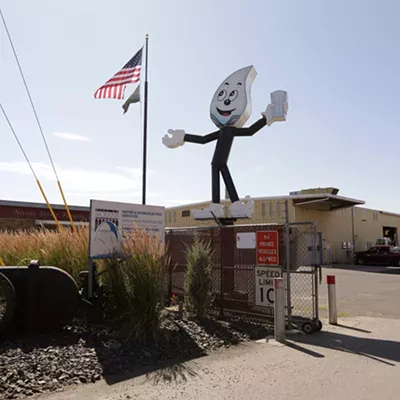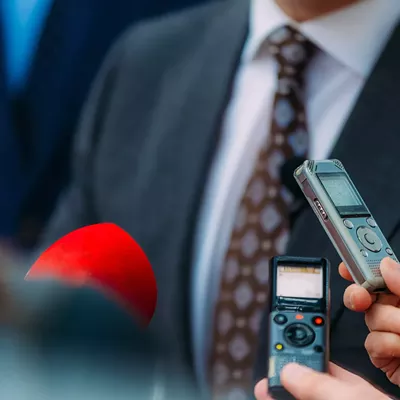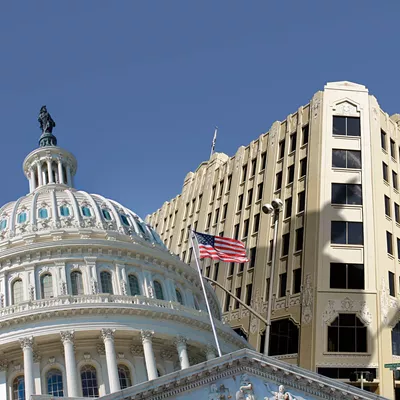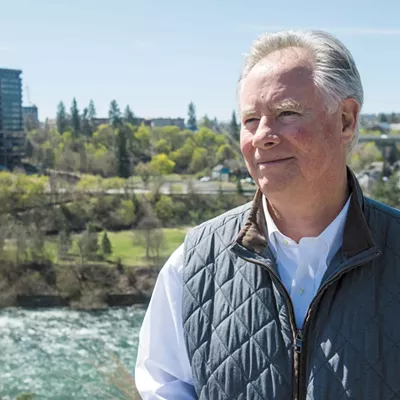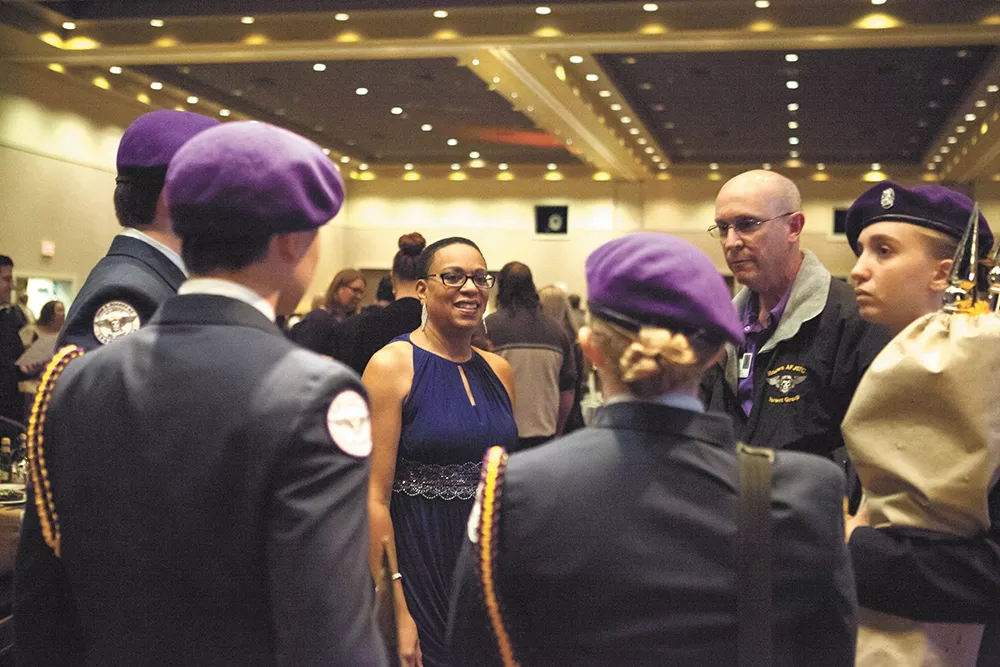
At a crowded NAACP fundraiser at a Northern Quest Resort & Casino banquet hall in November, the speeches don't mention the name "Rachel Dolezal" once.
Back in June, the Coeur d'Alene Press had revealed that Dolezal, a white woman, had been posing as black, including in her column in the Inlander and in her role as Spokane NAACP president. In an instant, Dolezal and the NAACP had been thrust into an international media whirlwind, facing scrutiny, mockery and debate.
But at this event, Spokane NAACP President Naima Quarles-Burnley brushes off the impact of her predecessor with an understatement. "Well, we've had quite an interesting year, haven't we," she says. Laughter ripples across the banquet hall.
Then Quarles-Burnley moves on to more serious topics: The Voting Rights Act, incarceration and inequity in education.
"As we look at Spokane Public Schools, we recognize the expulsion rate of students of color, and the suspension rate for students of color, is much higher than it should be," she says. "In Spokane, a person of color is eight times more likely to be jailed than a person of Caucasian descent. Our freedoms are under fire."
In the half-year since the Dolezal news broke, the Spokane NAACP's focus has once again turned toward defending those freedoms. Doing that has meant dressing the wounds left by the controversy — and the wounds that predated it.
"We had to rebuild trust," Quarles-Burnley says. "People began to question the integrity of the organization."
Diversifying
The outgoing message on the NAACP voicemail shows just how chaotic things got this year: "Please be advised if you left us a message during the month of June, it was deleted due to a system overload."
Even before June, the year had been tumultuous. Two other vice-presidents of the organization had resigned during Dolezal's brief tenure, meaning that Quarles-Burnley, a local minister for Bethel A.M.E., vaulted from third in line to the presidency.
The Dolezal controversy, Quarles-Burnley says, caused the group to pause for self-reflection.
"What was the culture of our organization?" she says. "Why were we so central-focused on the president, when there were a lot of other people doing things?"
Despite only being president since January, Dolezal had become synonymous with the NAACP's public persona. She was the one quoted in newspapers, up front in photographs. In March, the community rallied in support of Dolezal herself, who had claimed to have been the victim of nine hate crimes in the past decade. Later reporting called several of those claims into question.
For Quarles-Burnley, this was a cautionary tale about the dangers of putting too much of the organization's reputation in the hands of one person.
"[Quarles-Burnley] works hard, she's tireless," says Sandy Williams, creator of The Black Lens, a newspaper focused on Spokane's black community. "She knew, I believe, that she needed to mend some fences and build some bridges."
Part of Quarles-Burnley's bridge-building technique has been to shift the focus away from the office of president. That strategy was evident at the June 19 press conference after the Dolezal news broke.
"We chose not to have a press conference where I was the only speaker," Quarles-Burnley says. "It became, hopefully, apparent to the community that there were many more people behind the scenes."
Instead, she brought a row of chairs for the entire executive team, and they answered questions as a group. They've pushed back against the idea, popular in some national media stories, that Dolezal deserved full credit for the recent gains the organization had made.
"With regard to the accomplishments of Ms. Dolezal, she was only president of the Spokane NAACP for five months," Quarles-Burnley wrote in an email to Vice in its recent sympathetic profile of Dolezal. "While she did bring new ideas and new energy, the record does not support that as a single individual she increased the perceived or actual power or influence of the Spokane NAACP."
At the end of June, the Spokane NAACP held a meeting titled "Conversation: Moving Towards Healing," all about dealing with the feelings of betrayal and mistrust stemming from the Dolezal scandal. She says they met personally with some of the members who protested Dolezal. A few have returned to meetings, while others have remained at a distance.
In the months since, the Spokane NAACP membership of about 200 has actually grown. During the chaotic summer, about 30 new people joined, says Quarles-Burnley. Each month since, they've added three or four new members.
Spokane NAACP Vice President Phillip Tyler says lapsed members, who once felt isolated by the focus on the president, have returned to the fold. "They've had a conversation with me: 'I'm coming back after not being active for a long time because I feel that I can have a voice in the organization,'" Tyler says. "I think that speaks volumes. By lauding the efforts of one, it marginalizes the efforts of many."
At NAACP meetings, he says, the executives have concentrated on listening over talking.
"One of the biggest things I've heard, to be honest, is that people did not know the NAACP had a presence in Spokane until it blew up in the national spotlight," Tyler says. Even fewer knew that anyone — black, white, Hispanic, American Indian — could join.
In response, the Spokane NAACP wants to be visible everywhere. It has not only filled open committee slots in the NAACP, it's linked up with other advocacy groups like the American Civil Liberties Union, the Asian Pacific Islander Coalition, the Council on American–Islamic Relations and Planned Parenthood.
"The NAACP is going to have fingers or tentacles in so many different community and governmental organizations that our influence can't be cut off because one person becomes inactive or becomes ineffective," Quarles-Burnley says. "[So] that no one thinks ever again that you take down one individual and then an entire organization is going to crumble."
Young and old
Not everyone's as optimistic. Bob Lloyd, a member of the Spokane NAACP since 1974, came to the November fundraiser banquet. The sizable attendance — more than 300 — did little to temper his discouragement.
"Everybody showed up in the NAACP banquet. They're all going to say they've paid their dues," Lloyd says. "But they're not going to do a damn thing."
Upon witnessing the international feeding frenzy over Dolezal, he's skeptical that anyone would be raring to take on local power structures now. "Who would put their neck out there now?" Lloyd says. "You promote leaders and you push them up there on a pedestal, where you can push them off at will."
The Dolezal fallout did have a sort of chilling effect, Quarles-Burnley says. The NAACP has became more careful to avoid saying anything inflammatory, or anything that could be taken out of context.
In Lloyd's case, his frustration has simmered for a long time. But he's cautious: He doesn't want his willingness to point out flaws to dampen the enthusiasm of those who are trying their best.
For him, the tenure of the comparatively young Dolezal imbued the NAACP with the energy it needed. As a lecturer at Eastern Washington University, she recruited a crowd of young, racially diverse college students to attend NAACP meetings. When she left, Lloyd says, the young people disappeared too. Lloyd says he wants the NAACP to be less in the hands of old ministers, and more in the hands of passionate youngsters.
"Something happens when you age. You have mortgages. You worry about retirement," Lloyd says. "You're not dreaming anymore. You're trying to hold onto the little bit of nothing that you've got."
To recruit younger members, Tyler says, the NAACP has been contacting local college organizations, like black student union groups. He suggests using tools like Facebook and Instagram to keep the youth engaged.
Williams, the Black Lens founder, points to an occasional divide in the local NAACP, defined by a split between the young and the old, between newcomers and veterans. There are echoes of the national debate over Black Lives Matter, in a year where the movement's protests have shut down highways and even disrupted rallies for progressive presidential candidate Bernie Sanders.
Do you work through the existing system to make changes, the debate goes, or try to upend it? Williams argues that you need both strategies. "One of the reasons Martin Luther King was as effective as he was is you had Malcolm X, too," Williams says.
The local NAACP often takes the cooperative route. They're partnering with Spokane Public Schools to address discipline disparities. They're working with law enforcement groups to implement "smart justice" reforms.
Quarles-Burnley is on the Police Leadership Advisory Committee, the organization tasked with picking the new police chief after Frank Straub's sudden ouster in September. It's also tasked with figuring out what a "culture audit" of the organization would look like. "That needs to be done sooner than later," Quarles-Burnley says.
At other times, as with controversies over Confederate flags and blackface Halloween costumes, the Spokane NAACP has been rapid and unequivocal in its condemnation. In the August issue of The Black Lens, Quarles-Burnley lambasted Patrick Rushing, mayor of Airway Heights, for feeling he could "callously disregard and disrespect" African Americans by comparing Barack and Michelle Obama to a monkey and a gorilla, respectively, on Facebook. Two weeks later, Rushing resigned.
But plenty of work remains. On Monday, a grand jury in Cleveland refused to indict the cop who shot and killed Tamir Rice, a 12-year-old black child, within seconds of spotting Rice's weapon, which turned out to be a pellet gun.
"It is a reinforcement that, systemically, black lives do not matter as much the lives of [other] people," Quarles-Burnley says. For 96 years and counting, the Spokane NAACP has been fighting to change that. ♦



